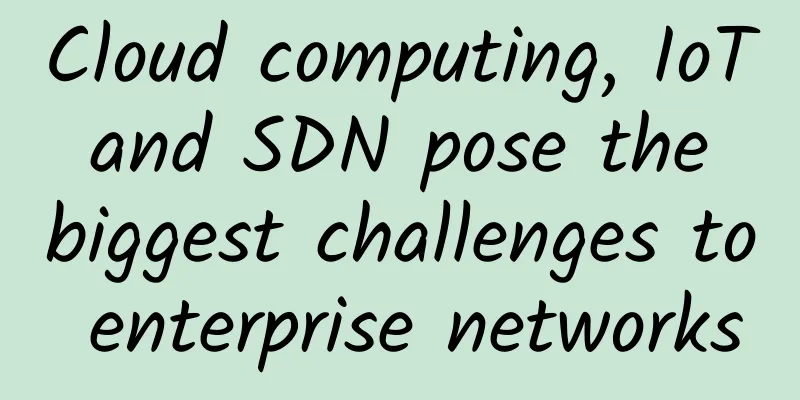The three-layer switch you know works like this

|
Why do we say that the Layer 3 forwarding performance of a Layer 3 switch is much more efficient than that of a router? Sometimes in many books it is mentioned that the software of current routers is also very powerful and can almost achieve the ability of speed-limited forwarding; but can software be compared with hardware? It is unlikely; the reason why the switch forwards quickly is that the switch uses a dedicated ASIC hardware forwarding card, while the router is software-based forwarding. We are used to saying that in a Layer 2 network environment, the same VLANs can communicate, but different VLANs cannot communicate. If you want to communicate, you must use Layer 3 devices. So what a Layer 3 switch must do is routing and forwarding, but what is the specific working principle?
First of all, what will the three-layer switch do in the same subnet and different subnet environments, and what are the differences? As shown in the figure above, in the Layer 2 environment, A and B communicate with each other. A sends a data packet with the destination MAC address of B. When it is sent to the switch, the switch forwards it based on the destination MAC address, and then starts to check its own MAC table entries to find the corresponding exit. In the whole process, only the MAC address is looked up, and no changes are made to the data frame. I will only give a brief and simple description of Layer 2 frame forwarding, after all, the focus is not here. In a Layer 3 environment, A and C communicate with each other. A sends a data packet. The destination MAC address should be the gateway MAC address, which is the switch MAC address SMAC. Let me insert a small episode here. Someone once asked me how a switch determines whether to forward at Layer 3. My answer at that time was to see if the MAC address of the data packet is its own. If it is, perform Layer 3 forwarding. Others said that the answer was correct; but when I came back to study this issue, I found that my answer was not rigorous. Why? When a switch receives a data packet with a Layer 2 destination MAC address of its own, what should it do at this time? Let me tell you a little story. I saw a short video on WeChat a few days ago. It was about a university classroom where two boys liked the class beauty sitting behind them so much that they kept looking at her. Suddenly, the girl stood up and prepared to leave. When she passed by them, she handed a rolled-up note to the boy sitting next to her. Physically, the girl handed the note to the boy. What would the boy do next? Would he open the note to see what was written inside? When the Layer 3 switch receives the destination MAC address as its own, it also needs to decapsulate it to the upper layer and check the Layer 3 destination IP address. Then what? ?At that time, the boy took the note very happily, and then opened it. It said "Please pass the note to the next person" on it. Haha, the three-layer switch is also like this. When it sees that the destination IP address is not its own, it performs forwarding at the routing level. So when the switch executes the three-layer forwarding, it is to check whether the IP address is its own while the destination MAC is its own. If it is its own, there is no need to forward it. When the switch determines that the destination IP is not its own, does it necessarily check the routing table? No, this is the key to the switch. The switch will not check the routing table, the ARP table, or the MAC address table at this time; what table will the switch check? The switch will now check the hardware forwarding table integrated in the ASIC hardware forwarding card. What does this hardware forwarding table contain?
Each manufacturer has a different definition in this area, but the principle is the same. Cisco uses the CEF table, and now the router has also integrated software-based CEF, which contains three tables, including the FIB table, the adjacency table (hardware forwarding table) and the netflow table. |
<<: Industrial IoT challenges are daunting, and seven test platforms are particularly important
>>: MIIT releases 5G spectrum planning, China launches mid-band 5G commercialization
Recommend
Wangsu Security: To prevent the “barrel effect” in network security, how can enterprises build “systematic security”?
Recently, a technical exchange meeting on Wangsu ...
Detailed explanation with pictures and text: 12 mobile application design principles to improve user experience
【51CTO.com original article】 Today, with just the...
Why 99% of business leaders are paying attention to this issue
Digitalization and the provision of digital servi...
5G R17 freeze time postponed for another half a year: What is the reason? What is the impact?
After two uncertain postponements, the 5G R17 fre...
NIST aims to make frequency sharing more efficient for wireless networks
Machine learning solutions will help different ra...
A national expert group visited Tiantan Hospital to discuss the smart transformation of hospitals in the digital era
On August 27, the "Entering Tiantan - Smart ...
How did TA succeed in intercepting tens of millions of malicious addresses?
Want to self-check and improve your cybersecurity...
What is Intelligent Edge Computing?
You’ve heard of edge computing. You may have even...
A brief history of the development of the HTTP protocol and analysis of common interview questions
[[375750]] This article is reprinted from WeChat ...
[11.11]edgeNAT: 30% off monthly VPS and 40% off annual VPS, top up 500 yuan and get 100 yuan
edgeNAT has released a promotion during the Doubl...
Why is 5G suddenly not popular anymore?
In the past two days, an article about the curren...
How edge computing and 5G can drive business applications
Over the past decade, advances in cloud computing...
A complete guide to worry-free WiFi coverage during the Dragon Boat Festival holiday
The Dragon Boat Festival holiday has begun. Durin...
Four major trends in the development of global information infrastructure: CDN will have more intelligent elements
With the emergence of a new round of scientific a...
Will 5G kill WiFi?
As 5G is about to be commercialized, more and mor...









